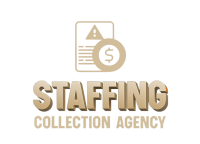When it comes to chasing down staffing payments from SMEs, having a solid recovery system in place is crucial. This article explores a 3-phase Recovery System designed to help companies recover their funds efficiently and effectively from debtors. Let’s dive into the key takeaways from each phase:
Key Takeaways
- Phase One involves sending letters to debtors, skip-tracing, and daily attempts to contact debtors for resolution.
- Phase Two includes drafting letters demanding payment and contacting debtors via phone calls.
- Phase Three offers recommendations for either closing the case or proceeding with litigation, with associated costs and rates for collection services.
Recovery System for Company Funds
Phase One
Within the first 24 hours of initiating Phase One, a multi-pronged approach is set in motion to secure your funds. Immediate action is critical; hence, a series of four letters is dispatched to the debtor via US Mail. Concurrently, a thorough skip-trace and investigation is conducted to unearth the most current financial and contact information available.
Our collectors engage vigorously, utilizing phone calls, emails, text messages, faxes, and more to reach a resolution. Daily attempts are made to contact the debtor, persisting for 30 to 60 days. Should these efforts not yield results, the process seamlessly transitions to Phase Two, involving our network of affiliated attorneys.
The goal is clear: establish contact, communicate urgency, and secure payment. Persistence is key in this initial phase.
Engagement with the debtor during this phase is crucial, as it sets the tone for the recovery process. Here’s a snapshot of the initial actions taken:
- Dispatch of the first letter to the debtor
- Comprehensive skip-tracing and investigation
- Persistent collector communication attempts
If resolution remains elusive after exhaustive efforts, the case advances to the next phase, ensuring no momentum is lost in the pursuit of your company’s funds.
Phase Two
Upon escalation to Phase Two, the intensity of the recovery process increases. The case is handed over to a local attorney within our network, ensuring that the debtor is approached with the added weight of legal representation. The attorney’s actions include:
- Drafting and sending a series of demand letters on law firm letterhead.
- Initiating direct telephone contact to negotiate payment.
If these measures do not yield results, a detailed report is prepared, outlining the challenges encountered and the recommended course of action for Phase Three.
The table below summarizes the attorney’s involvement in Phase Two:
| Action | Description |
|---|---|
| Demand Letters | Series of letters demanding payment |
| Telephone Contact | Direct negotiation attempts |
Should the debtor remain unresponsive, the situation is assessed for potential litigation or alternative collection activities. The decision to proceed is critical, with implications for both the strategy employed and the associated costs.
Phase Three
Upon reaching Phase Three, the path forward becomes clear. If the investigation suggests low recovery prospects, we advise case closure with no fees owed. Conversely, should litigation be the recommended route, a decision point arises.
Opting out of legal action allows for claim withdrawal at no cost, or continuation of standard collection efforts. Choosing litigation necessitates upfront legal fees, typically between $600-$700, based on the debtor’s location. These fees cover court costs and filing expenses, initiating a lawsuit to recover all owed funds, including litigation costs.
Should litigation prove unsuccessful, the case concludes without further financial obligation to our firm or affiliated attorney.
Our fee structure is straightforward and competitive, with rates varying by the number of claims and age of accounts. Here’s a quick overview:
-
For 1-9 claims:
- Accounts under 1 year: 30%
- Accounts over 1 year: 40%
- Accounts under $1000: 50%
- Accounts with an attorney: 50%
-
For 10+ claims:
- Accounts under 1 year: 27%
- Accounts over 1 year: 35%
- Accounts under $1000: 40%
- Accounts with an attorney: 50%
In summary, Phase Three is about making informed choices based on the likelihood of recovery, with transparent costs and a clear understanding of potential outcomes.
Frequently Asked Questions
What is the Recovery System for Company Funds?
The Recovery System for Company Funds consists of three phases: Phase One involves sending letters to debtors, skip-tracing, and attempting to contact debtors. Phase Two includes forwarding the case to an affiliated attorney for further action. Phase Three involves either closing the case if recovery is unlikely or proceeding with legal action.
What happens if recovery is not likely in Phase Three?
If recovery is not likely in Phase Three, the case may be recommended for closure, and no fees will be owed. Alternatively, litigation may be recommended, requiring upfront legal costs. If litigation fails, no fees will be owed.
What are the rates for the Recovery System?
The rates for the Recovery System depend on the number of claims submitted and the age of the accounts. Rates range from 27% to 50% of the amount collected, with variations based on account age and placement with an attorney.
What actions are taken in Phase One of the Recovery System?
In Phase One, letters are sent to debtors, skip-tracing is conducted, and contact attempts are made via phone calls, emails, and more. If unsuccessful, the case proceeds to Phase Two.
What occurs in Phase Two of the Recovery System?
In Phase Two, the case is forwarded to an affiliated attorney who sends demand letters to the debtor and attempts to contact them. If no resolution is reached, recommendations for further steps are provided.
What are the options if legal action is recommended in Phase Three?
If legal action is recommended in Phase Three, the client can choose to proceed with litigation by paying upfront legal costs or withdraw the claim. If litigation fails, no fees are owed.





